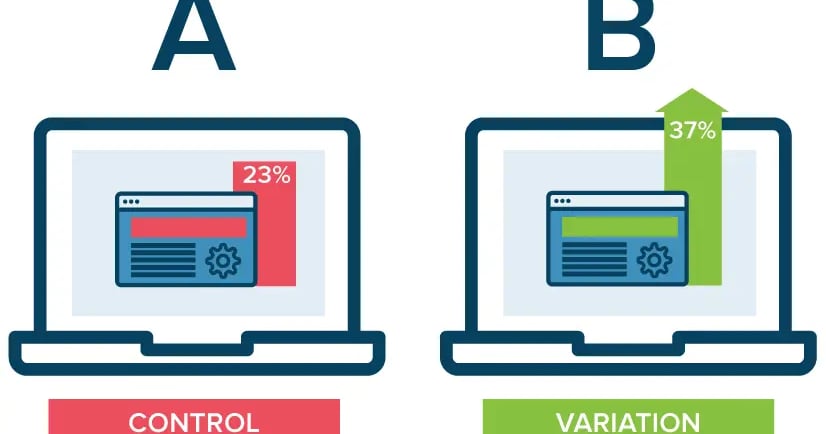A/B Testing in Product Analytics: The North Star for Informed Decisions
PRODUCT ANALYTICS


In the dynamic world of product development, uncertainty is the only certainty. As Analytics Product Owners, we are the captains of the ship, navigating through the vast sea of data to steer our product toward success. A/B testing, also known as split testing, is our trusty compass, guiding us toward informed decisions and optimization. In this deep dive, we'll explore A/B testing's vital role in product analytics, how it works, best practices, and its transformative impact on product development.
The Essence of A/B Testing
A/B testing is a controlled experimentation method used to evaluate the impact of changes or variations to a product on user behavior. It involves comparing two versions of a product or feature (Version A, the control, and Version B, the variation) to determine which performs better.
How A/B Testing Works
The process of A/B testing can be broken down into several key steps:
1. Identifying a Hypothesis
Every A/B test begins with a hypothesis. This hypothesis is often based on a question or assumption, such as "Will changing the color of the 'Buy Now' button increase conversion rates?"
2. Creating Variations
Variations are the different versions of a product or feature that will be tested. For our example, Variation A might have the original button color, while Variation B has the new color.
3. Splitting Users
Users are randomly assigned to one of the variations, ensuring that the assignment is statistically significant. This randomization minimizes bias and ensures that the two groups are comparable.
4. Running the Test
The test is conducted by exposing each group to its respective variation. In our example, users in Group A see the original button color, while users in Group B see the new color.
5. Collecting Data
Data is collected on user interactions with each variation. This includes metrics like click-through rates, conversion rates, bounce rates, and any other relevant KPIs.
6. Analyzing Results
Statistical analysis is performed to determine if there is a significant difference in user behavior between the two variations. Tools like t-tests or chi-squared tests are commonly used for this purpose.
7. Making Informed Decisions
Based on the analysis, a decision is made about whether to implement the change (Version B) or stick with the original (Version A). The decision should be data-driven and consider the impact on key metrics.
Best Practices in A/B Testing
Successful A/B testing requires attention to detail and adherence to best practices:
1. Define Clear Goals
Clearly define the goals of your A/B test. What are you trying to achieve? Whether it's increasing conversion rates, improving user engagement, or boosting revenue, having well-defined goals is crucial.
2. Randomization
Ensure that user assignment to variations is random and statistically significant. Biased assignment can lead to skewed results.
3. Sufficient Sample Size
A/B tests require a sufficiently large sample size to detect meaningful differences. Small sample sizes can lead to inconclusive results.
4. Test Duration
Consider the duration of your test. Seasonality and day-of-week effects can impact results. Ensure your test runs for an appropriate length of time.
5. Monitor Metrics
Keep a close eye on the metrics you're tracking during the test. Sudden changes or anomalies may require investigation.
6. Statistical Significance
Make decisions based on statistical significance. A change that appears to have a small impact may not be statistically significant.
The Impact of A/B Testing
A/B testing is not just a tool; it's a game-changer. Here's how it impacts product development:
1. Data-Driven Decision-Making
A/B testing replaces guesswork with data-driven insights. It empowers product teams to make informed decisions based on user behavior.
2. Iterative Improvement
A/B testing encourages a culture of continuous improvement. Product teams can iterate on features, making incremental changes based on test results.
3. Mitigating Risk
By testing changes on a subset of users, A/B testing mitigates the risk of rolling out potentially harmful changes to the entire user base.
4. Prioritizing Features
Product teams can prioritize features based on their impact. Features with positive test results are given higher priority for development.
5. User-Centric Development
A/B testing keeps the focus on the user. Features and changes are validated by user behavior, ensuring that they resonate with the audience.
Challenges and Ethical Considerations
While A/B testing is a powerful tool, it comes with challenges and ethical considerations:
1. Duration of Tests
Tests that run for extended periods can be challenging to manage. User behavior may change over time, leading to inconclusive results.
2. Informed Consent
Ethical considerations arise when users are included in tests without their informed consent. Transparency is key to addressing these concerns.
3. Cumulative Impact
Multiple A/B tests can cumulatively impact the user experience. It's essential to consider the overall effect on users.
4. Statistical Significance
Interpreting results correctly can be challenging, especially when dealing with small sample sizes or complex user behavior.
Conclusion
As Analytics Product Owners, A/B testing is our compass, guiding us toward product optimization and user-centric development. It transforms assumptions into certainties, guesswork into informed decisions, and uncertainty into growth. With A/B testing as our trusted ally, we continue to chart a course toward a future where data, insights, and user needs converge to create exceptional products.
